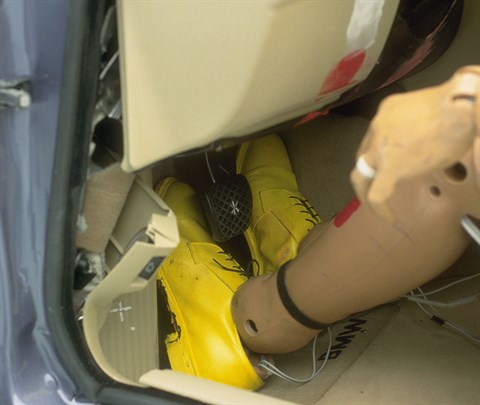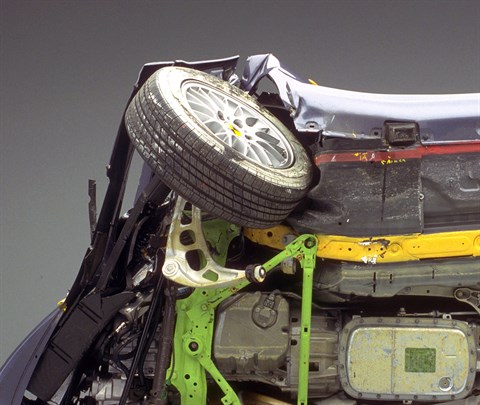Moderate overlap front: original test
Rating applies to 2000-05 models built after November 1999
Tested vehicle: 2000 BMW 328i 4-door
The BMW 3 Series was redesigned for the 1999 model year.
All 2000 and later 3 Series models manufactured after November 1999 include structural changes to improve occupant protection in frontal crashes (note: information about when a specific vehicle was manufactured is on the certification label typically affixed to the car on or near the driver door).
The Insurance Institute for Highway Safety has evaluated the crashworthiness of a BMW 328i with the structural changes in a 40 mph frontal offset crash test into a deformable barrier.
| Evaluation criteria | Rating |
|---|---|
| Overall evaluation | |
| Structure and safety cage | |
| Driver injury measures | |
| Head/neck | |
| Chest | |
| Leg/foot, left | |
| Leg/foot, right | |
| Driver restraints and dummy kinematics | |

Action shot taken during the frontal offset crash test.

The dummy's position in relation to the steering wheel and instrument panel after the crash test indicates that the driver's survival space was maintained well.

There was only limited intrusion into the driver footwell area, and injury measures on the legs and feet were low.

A strong safety cage helped keep the tire out of the driver footwell area, maintaining the integrity of the occupant compartment. Crumpled structure in front of the occupant compartment indicates where much of the crash energy was absorbed.
Head restraints & seats
Seat type: All seats
| Overall evaluation | |
|---|---|
| Dynamic rating | |
| Seat/head restraint geometry |
About the head restraint & seat test
Currently, IIHS tests apply only to front seats.
